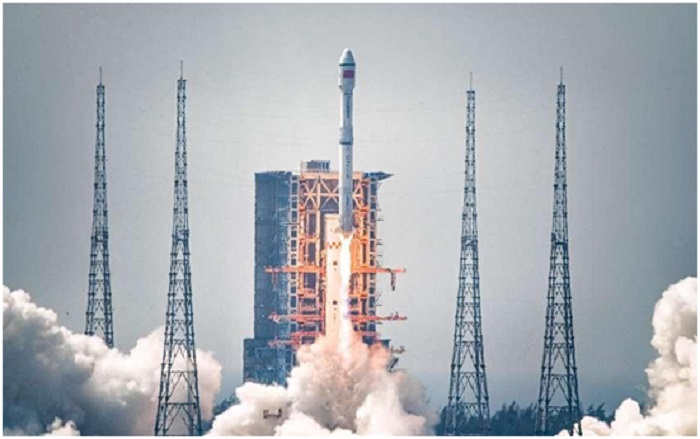



At 11:06 a.m. on Feb. 27 Beijing Time, China’s Long March-8 Y2 carrier rocket took off from the Wenchang Space Launch Site in south China’s Hainan province, with a total of 22 satellites onboard. The successful launch marked the highest record for the total number of satellites sent into space by a single rocket in China.
Compared with the traditional practice of launching a single satellite with one rocket, using one rocket to simultaneously or successively send multiple satellites into preset orbits can put better use of the carrying capacity of the rocket, improve efficiency and reduce the cost of satellite launch, according to an expert.
Launching multiple satellites with one rocket involves serious technological challenges, which have been conquered only by a handful of countries.
In 2015, China’s Long March-6 carrier rocket successfully sent 20 satellites into space in its maiden flight, the highest until the recent successful launch of the Long March-8 Y2.
Long March-8 is China’s self-developed medium-lift carrier rocket. The launch of the Long March-8 Y2 carrier rocket marked the debut of a modified version of the Long March-8 carrier rocket, which does not have side booster.
The Long March-8 Y2 carrier rocket is about 48 meters long, with a 3.35-meter-diameter first stage and a 3-meter-diameter second stage. It uses non-toxic and pollution-free propellants and has a 3-ton capacity for sun-synchronous orbit. The rocket has a takeoff weight of about 198 tons and a takeoff thrust of about 240 tons.
The biggest difference between the Long March-8 Y1 and the Long March-8 Y2 is that the new model has canceled the two side boosters and has changed the two-and-half stages design into a two-stage rocket design featuring serial staging, said Chen Xiaofei, one of the designers of the Long March-8 rocket with China Academy of Launch Vehicle Technology (CALT) under China Aerospace Science and Technology Corporation.
The 22 commercial satellites launched aboard the Long March-8 Y2 carrier rocket will be mainly used for Earth observation, Internet of Things (IoT) communications, and scientific experiments, and will be able to provide services including survey of resources, synthetic aperture radar (SAR) data support, acquisition of data from decentralized IoT terminals, in-orbit scientific experiment and verification of technologies, and collection of information about ships.
To ensure that the 22 commercial satellites are sent into their preset orbits successfully, researchers needed to first figure out the “seating arrangement” for them in the fairing, said an expert.
Based on meticulous analysis of the structures and needs of these satellites, researchers eventually innovated a three-layer multiple satellite dispenser that could ensure a comfortable “seat” in the limited space of the fairing for each satellite.
Since these satellites needed to leave the carrier rocket when they enter space, scientists must take into consideration deviations in movements caused by different ways in which satellites separate from the rocket and energy sources they use during the process.
The research and development team of the Long March-8 Y2 carried out multiple rounds of simulation-based calculations for the deviations in the movements of the rocket and satellites and designed 12 separation maneuvers to make sure all the 22 satellites can “get off” the launch vehicle safely.
The 22 satellites aboard the rocket were designed and manufactured by seven entities. “To put it simply, it is a “rideshare” mission, which provides economical and practical launch services for users and significantly lowers the threshold for launches,” said Xiao Yun, chief commander of Long March-8 carrier rocket with the CALT.


The Humanitarian Service Diamond Awards has.
A Chinese Company, Inner Galaxy Steel.


The Programme Coordinator, Regulatory, Compliance and.


A Non-Governmental Organization (NGO), Committee for.
The Trustfund Pensions Limited has chided.


The House of Representatives Committee on.
The China General Chamber of Commerce.


Senator Chuka Utazi who represented Enugu.


An Abuja based Legal Practitioner, Ugochukwu.


The African business community in Yiwu,.
Leave a Comment